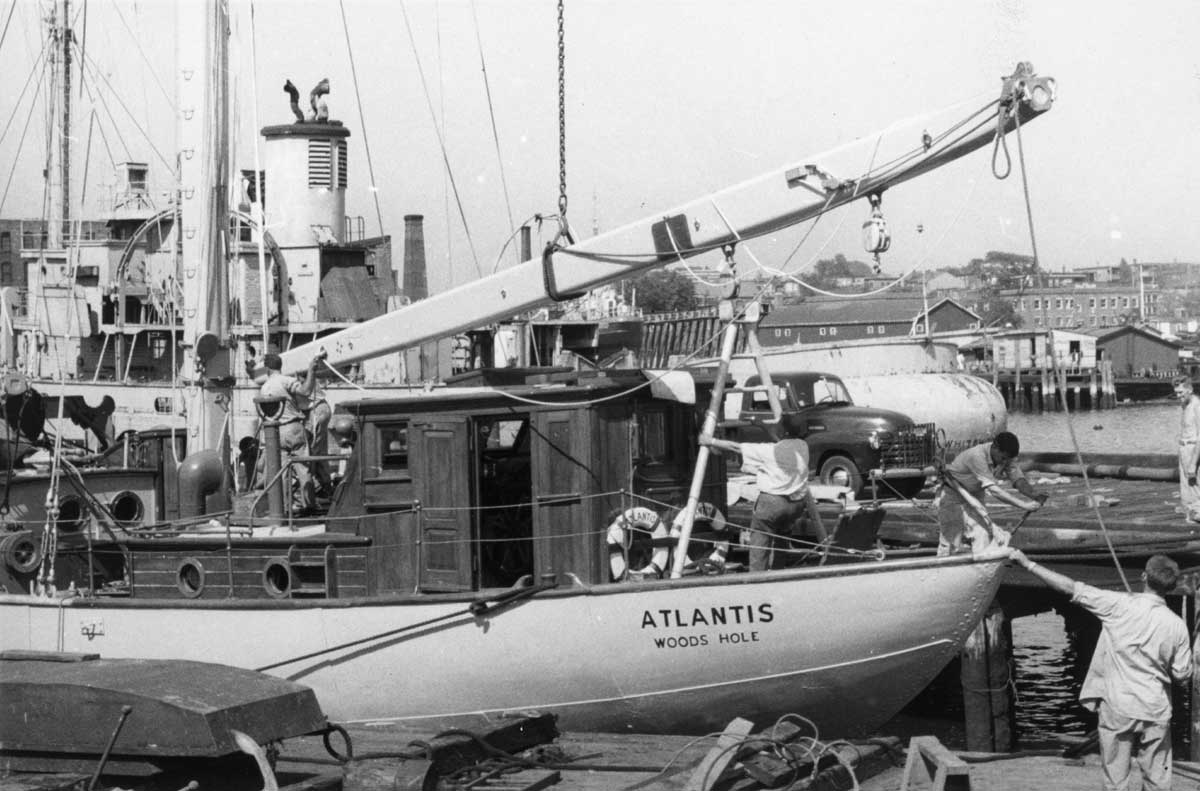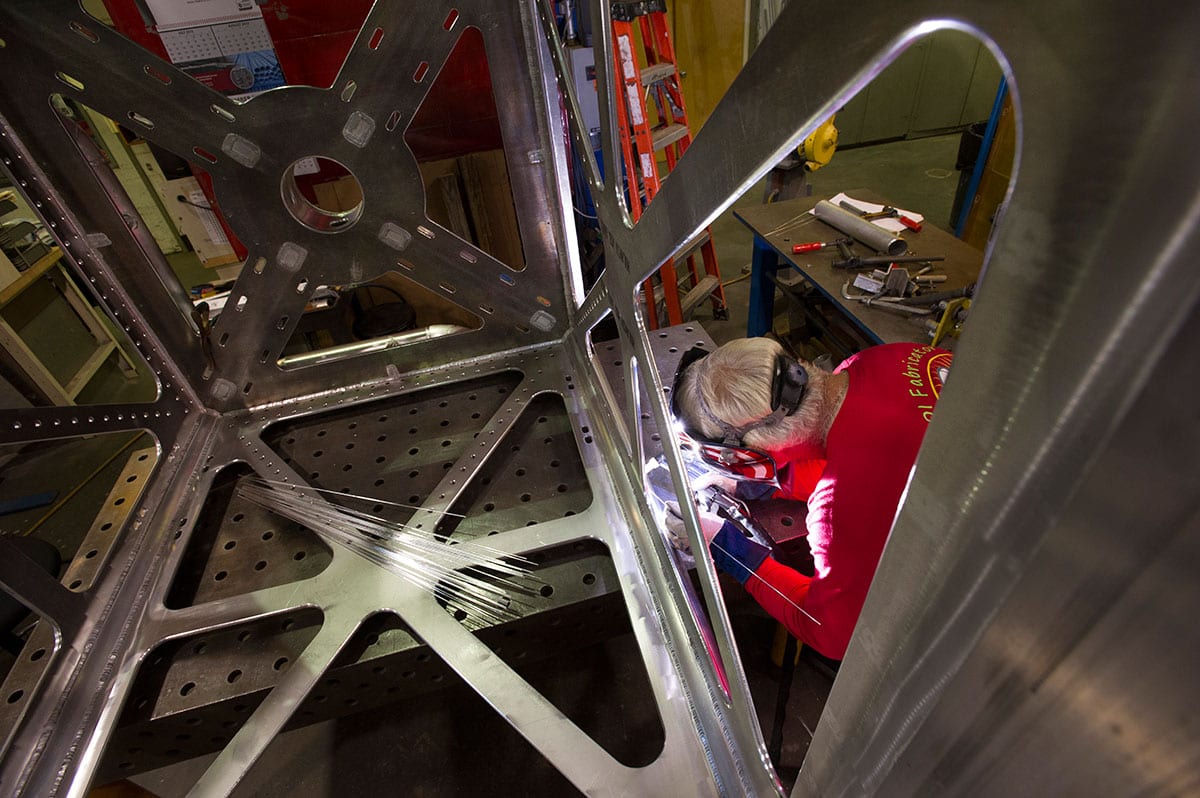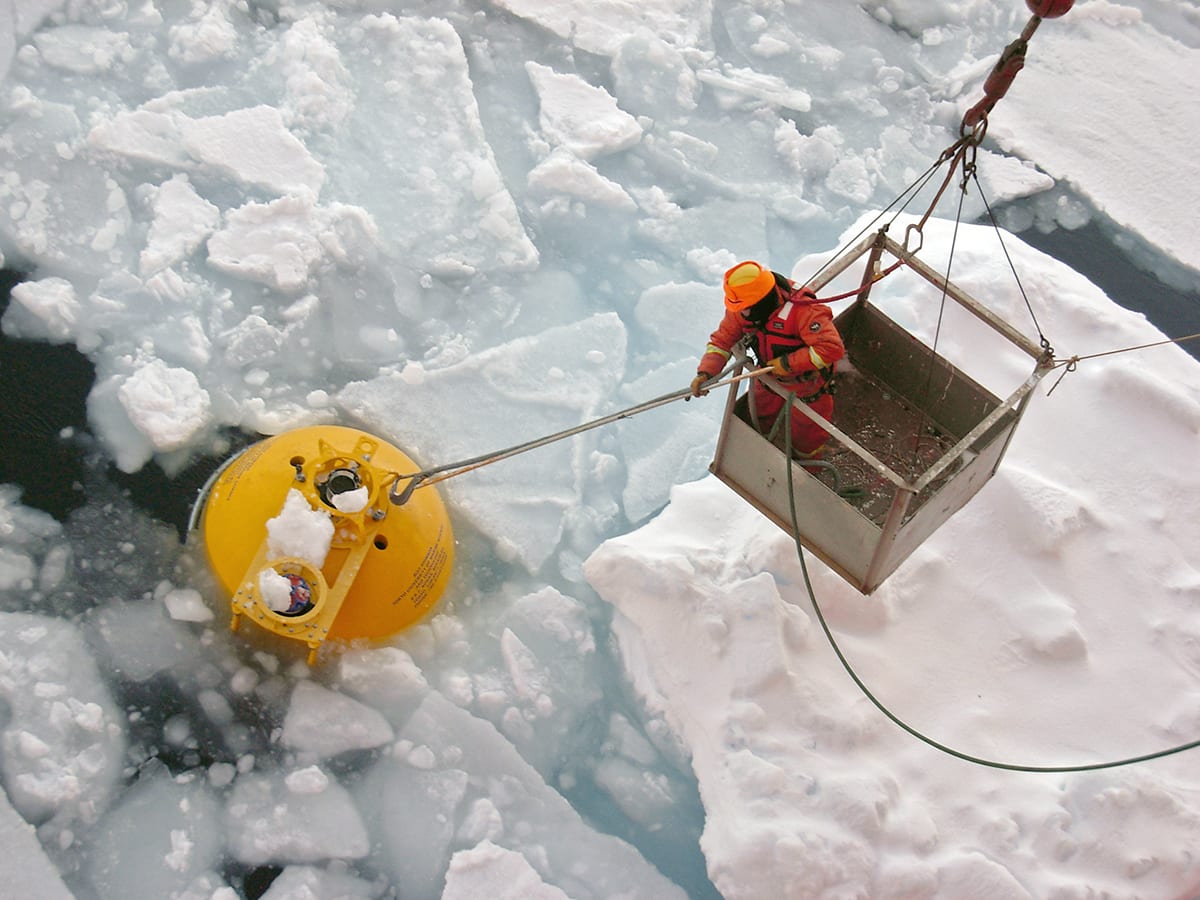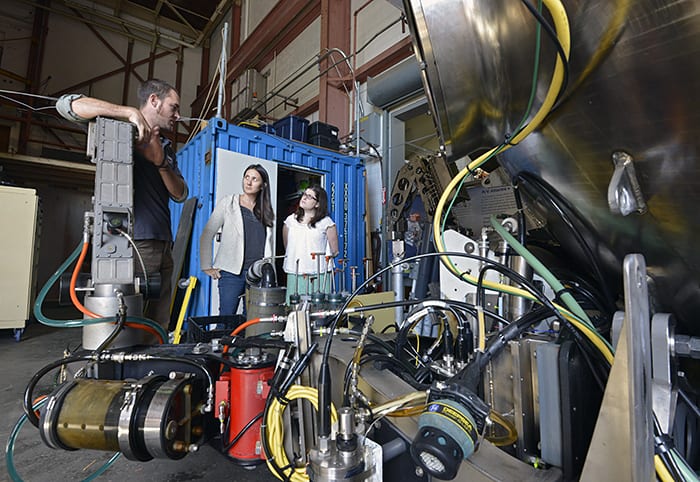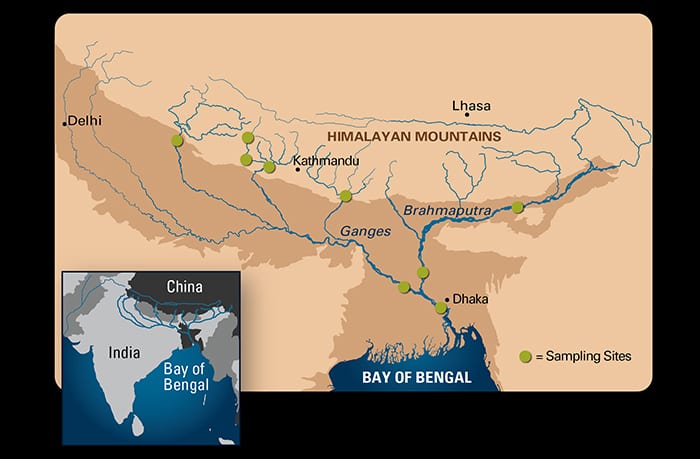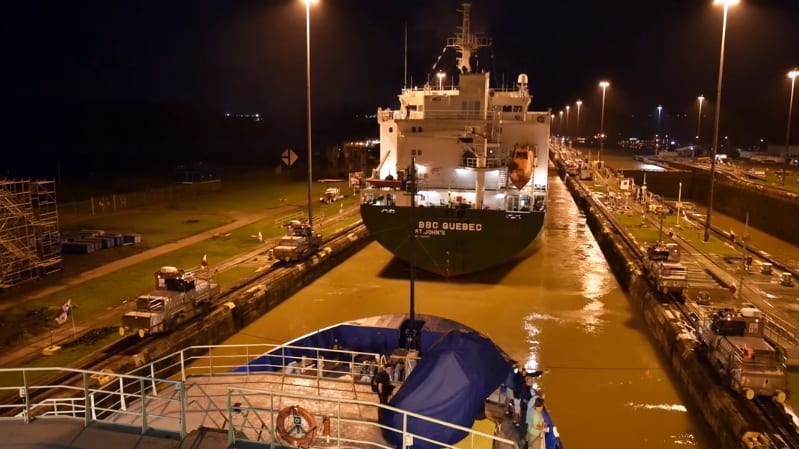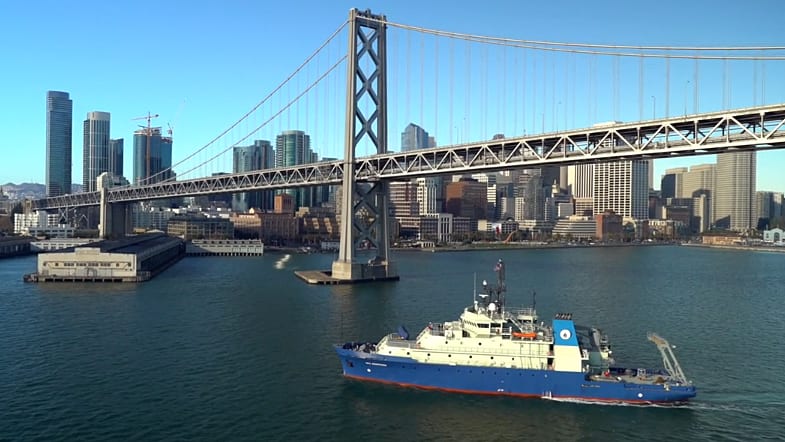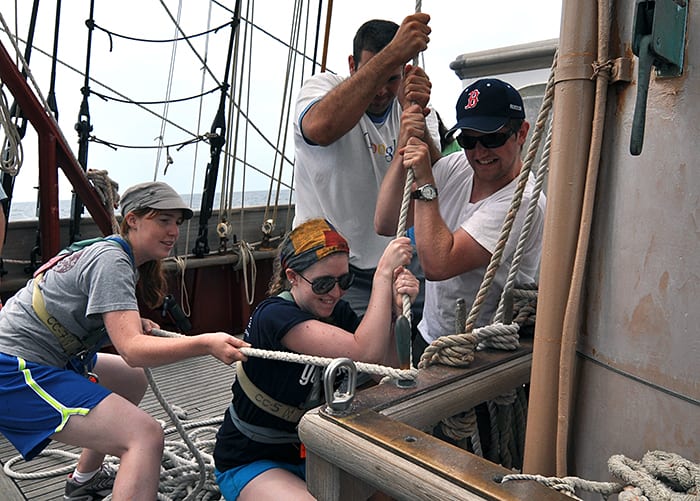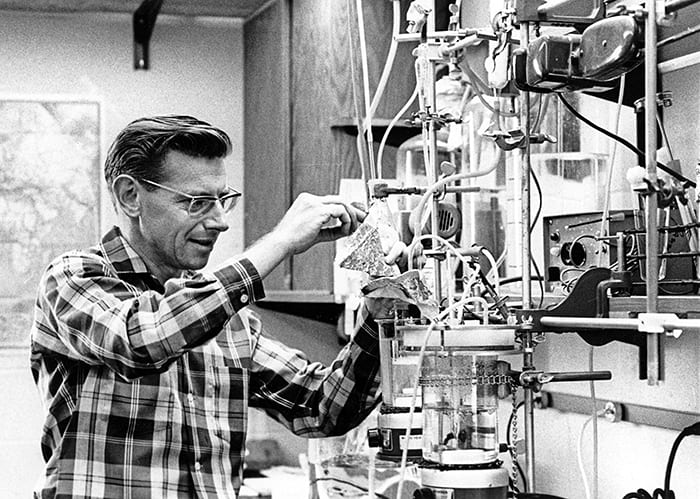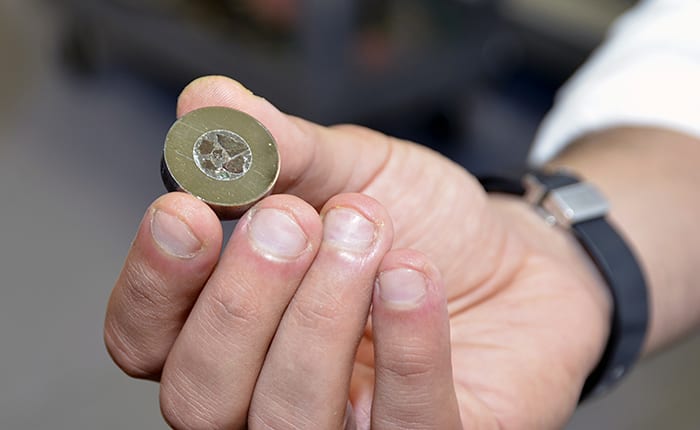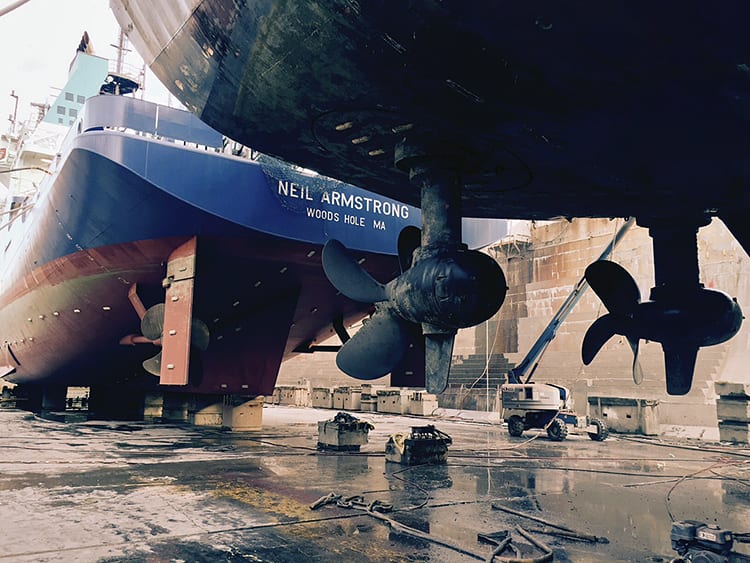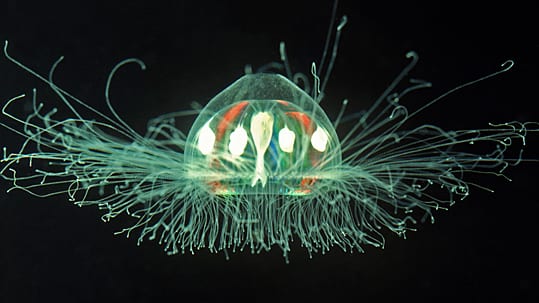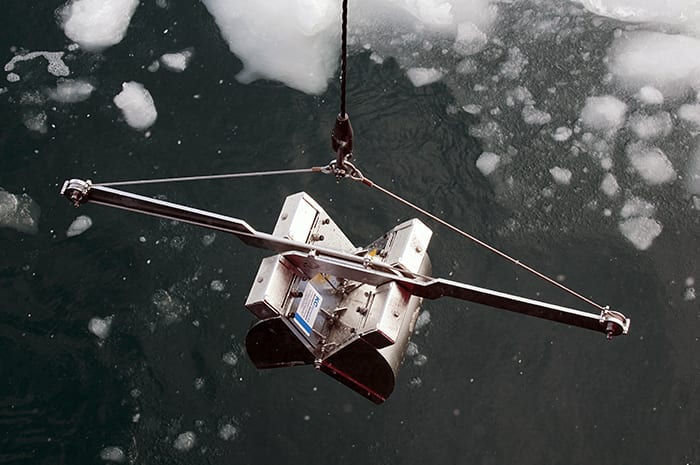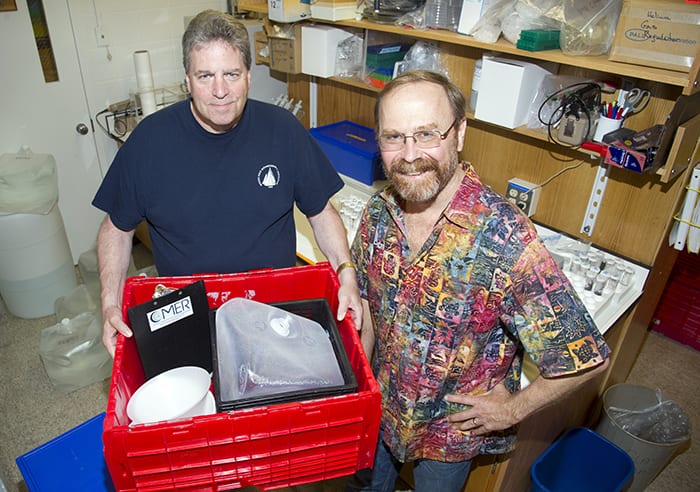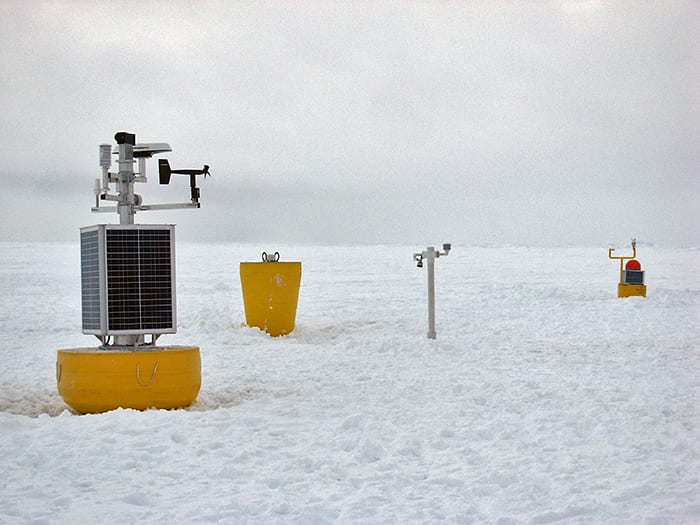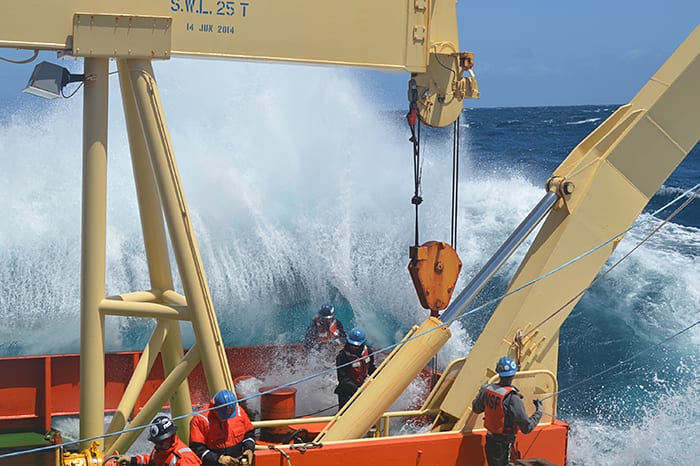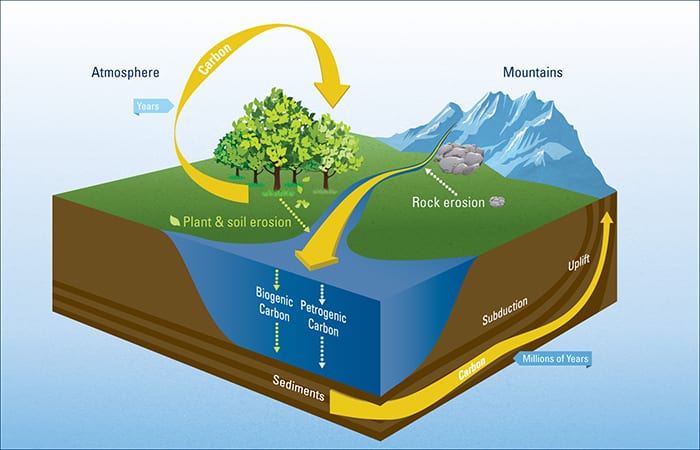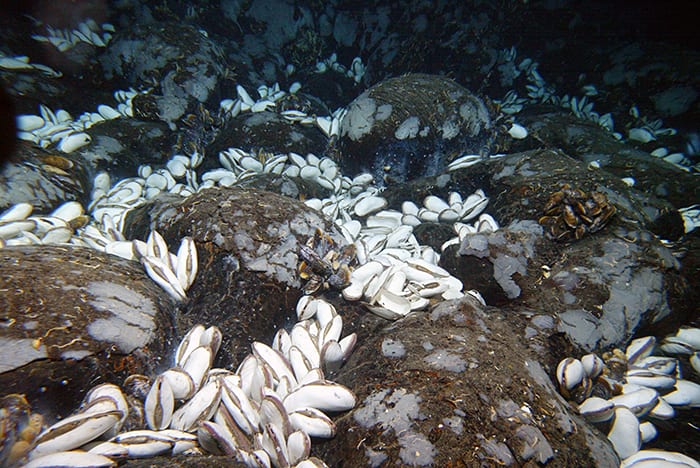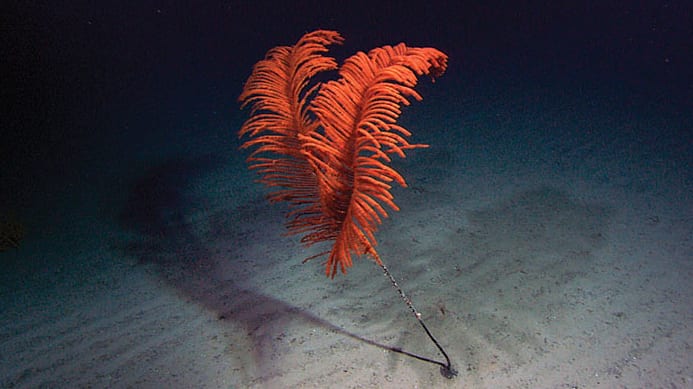Multimedia
Microbe ID
The ocean has two kinds of microbes: Autotrophs use sunlight to convert carbon dioxide into organic carbon, while heterotrophs convert organic carbon such as glucose into nutrients. Scientists are developing new tools…
Read MoreFirst in Line
A work crew fits the boom to R/V Atlantis‘ new mizzen mast in this undated photograph from the Munro Shipyard in Chelsea, Mass. Atlantis was the first ship operated by…
Read MoreBuilt Right
Tony Delane, WHOI welder and fabricator, assembles the lower frame of a coastal surface mooring. The WHOI Mechanical Shop routinely designs and assembles the platforms and instruments that must weather…
Read MoreArctic House Call
Crewmember Daryl Tobin from the Canadian icebreaker Louis S. St. Laurent secures a line on a mooring that had been tethered to the seafloor in the Arctic Ocean. The instrument…
Read MoreDry Dive
Pilot Jefferson Grau discusses the submersible Alvin’s systems and capabilities with professor Diane Adams, of Rutgers University (left) and Professor Jen Glass of Georgia Tech (right). Alvin was in Woods…
Read MoreDown the River
During monsoons, the Ganges and Brahmaputra Rivers export 50 metric tons of carbon-containing sediments per day into the Bay of Bengal. WHOI scientists study rivers around the world to analyze…
Read MoreTrieste Leads the Way
Fifty-six years ago today, Jacques Piccard and Lt. Don Walsh made history by diving inside the U.S. Navy bathyscaphe Trieste to the deepest known spot in the ocean, the Challenger…
Read MoreR/V Neil Armstrong: Panama Canal
On November 23, 2015, R/V Neil Armstrong entered the Panama Canal on its way from the Pacific to the Atlantic and eventually to the U.S. East Coast.
Read MoreR/V Neil Armstrong Entering San Francisco
On November 7, 2015, R/V Neil Armstrong completed its inaugural voyage, sailing into San Francisco Harbor on a sunny Saturday morning.
Read MoreScience Under Sail
Students in the MIT-WHOI Joint Program in Oceanography and Roman Shor (second from right) of the Sea Education Association (SEA) aboard SEA’s research vessel Corwith Cramer raised a sail during the 2011 Jake…
Read MoreAdventures in Science
“Science is an adventure, not a career,” WHOI microbiologist Holger Jannasch (1927-1998) once said. Equally at home in the lab or at sea, Jannasch is remembered for making seminal discoveries…
Read MoreOuter Space to Inner Space
WHOI scientists are known for the fact that many of them address some of the most immediate and pressing questions of our time. MIT-WHOI graduate student Adam Sarafian, however, is…
Read MoreShips Out of Water
Two vessels in the U.S. academic research fleet, Atlantis (foreground) and Neil Armstrong, rest stern-to-stern in dry dock in Charleston, S.C. The two ships, both operated by WHOI, were hauled out…
Read MoreJellyfish & Other Zooplankton
Grabbing Sediment
A Van Veen grab is lowered to the seafloor, where the two halves of the scoop will close, “grabbing” a large scoop of sediment and any organisms living in it.…
Read MoreA Wonderful Life
Oceanographer Emeritus George Hampson (right) contributed to many studies of invertebrates in marine systems, ranging from the intertidal zone to deep water. He was also one of the pioneering scientists to study…
Read MoreREMUS 6000 Animation
This Remus 6000 animation illustrates the large survey mapping and detailed imaging capabilities of the autonomous underwater vehicle.
Read MoreTesting the Water
WHOI supporter Harry Hollum (left) holds a sampling kit that marine radiochemist Ken Buesseler (right) developed to help citizen scientists on the West Coast collect water to be tested for…
Read MoreIce Base
Data from the ice-covered Arctic Ocean are hard to come by because the region is extremely remote and the environment hostile. Scientists and engineers are overcoming these challenges by deploying…
Read MoreRoaring Forties
A wave breaks over the fantail of the research vessel Nathaniel B. Palmer, drenching several people working on deck during a WHOI-led equipment recovery operation in November 2015. The ship…
Read MoreCarried by the River
The world’s river systems sequester atmospheric carbon dioxide by transporting decaying organic material from land to the ocean. Although river transport of carbon to the ocean is not large enough to…
Read MoreMysterious Microbes
WHOI microbiologist Amy Apprill, shown here giving a presentation in 2013, studies the relationships between microorganisms and marine animals. Like humans, marine animals have bacteria living on their skin. While…
Read MoreRevisiting History
In 2002 WHOI scientists re-visited the seafloor near the Galápagos Islands, where in 1977 hydrothermal vents were found to support thriving communities of diverse organisms that survive on a foundation of chemosynthesis. Diving…
Read More

